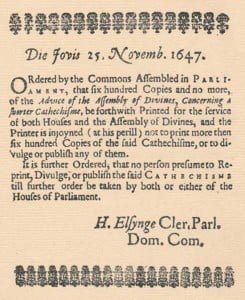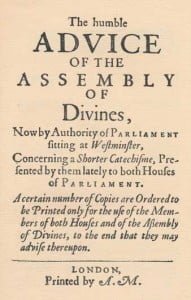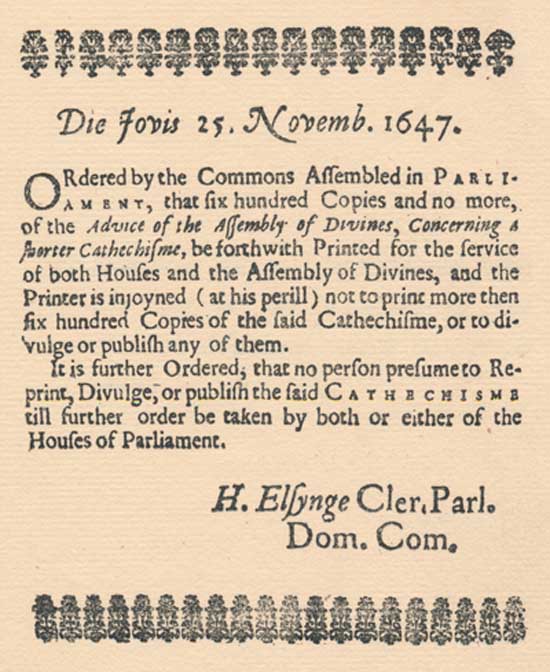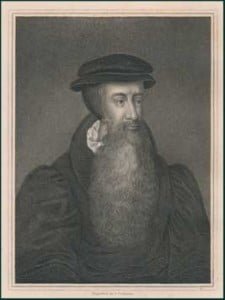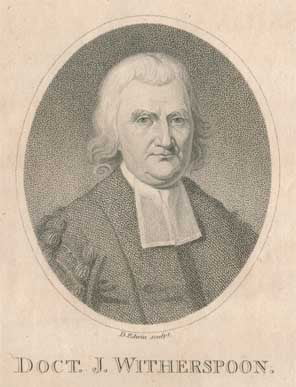1.
The Rage Against God by Peter Hitchens
Peter Hitchins writes well with logic and grace. His logic is turned to the folly of those who seek after utopia, his grace extended towards his atheist brother who has been a life long antagonist. Hitchins starts with autobiography, his journey from compulsory chapel at public school to avowed atheism, Trotskyite politics, success in journalism then a gradual coming to faith motivated by retiring to ponder the fear of God. He examines reasons for loss of Christian faith in Britain and the horrible effects of atheism in the USSR. I would differ from his placing the two world wars as the major cause of decline of Christianity in Britain. For me the cause and blame are at the door of those who, while professing Christianity, lost faith in the veracity of Scripture and the reality of the supernatural. He then addresses three failed arguments of atheism. First conflicts fought in the name of religion are not about religion. Religion has not been the cause of recent conflicts. They are about power and control. Is it possible to determine what is right and wrong without God?
Are atheist states actually atheist or are their leaders self-proclaimed false gods? Finally he looks at militant atheism He describes the folly of Leftists in the west who admired the pre-war Soviet regime. He tells of the Soviets systematic campaign against Christianity. He shows how today's new atheists, like the old USSR, would prohibit parents teaching the faith to their children. Finally he concludes by telling us why he will no longer engage in pub;ic debate with his brother. The book was published before his brother's death. This is an excellent critique of atheism old and new, of all utopianism, secularism and socialism. It is a book which can encourage believers despite Hitchen's pessimism concerning the prospect of a godless future.
2.The Cameron Delusion by Peter Hitchens
A revised edition of his earlier book, The Broken Compass, this was published in early 2009 with Brown as Premier and before the full effects of the banking crisis were known. The first part on how Britain is governed tells how the major parties are now so alike fighting for the centre ground with a consensus on many issues. It is most informative on how politics is reported, the cosy alliance between journalists and politicians, well fed at expensive restaurants. He shows how previous fans of Blair would be happy to see Brown go for Cameron would mean little change, an astute prescience. The next part details how the left in the West failed to properly critique the evil Soviet empire, witness the TUC's failure to back Solidarity. He then examines how racialism, an irrational evil creed, became racism, a convenient slur on anyone defending our monocultural heritage. He criticises feminism for when liberating women from the kitchen it has enslaved them to the workplace. Happy with the original decriminalisation of homosexual acts he critiques subsequent campaigning for homosexual equality, e.g. civil partnerships. This was written before Cameron redefined marriage. He shows how those wanting equality turn into being intolerant of dissent labelling others as homophobic. Sometimes one may be surprised by the position he takes, like his criticism of Thatchers sale of Council houses. He is scathing on egalitarian comprehensive education, the loss of grammar schools, the best ladder of social mobility. He shows that in recent years the value of exam grades has been devalued as most of us have suspected. His chapter lamenting the loss of railways and the effect of road building is a thought provoking surprise. He ends with critiquing the support for Blairs war on Iraq which came from both right and left. This is a pessimistic volume. I looked to see if he has published more of late, but only The Rage Against God.
3. Roy of the Rovers: The Official Autobiography of Roy of the Rovers by Roy Race
Roy I had heard of but not read before. A football loving friend loaned this to me and it was a fun read if more in the realm of fantasy than football. How else could someone lead a side overseas only to be repeatedly kidnapped with the price a freedom, a football game against their captors. Similarly some incredibly huge crowds, endless last minute goals and generally goals galore. The book does accurately chronicle developments in the game e.g. going from no substitutes through one for injury and up to the present bench. Apart from kidnappings, two murder attempts and a terrorist bomb it is all good clean fun. Particularly clean is the personal sexual morality of the hero. One might think he is for his era an unusual footballer morally, no drink, drugs or cigarettes. A book that is clean and funny, suitable for adults and children and all who love the fantasy that is football.
4. The Brentford Triangle (Brentford Trilogy) by Robert Rankin
I read this out of local interest. I do not usually read fantasy but this is as much comedy as fantasy with Brentford in danger of attack from aliens. It has the cast first met in The Antipope. I do not know if the genre is growing on me but I enjoyed this more than the earlier novel. However I am still resistant to the genre so am not likely to read more in the series. But if this is your cup of tea, a very good cup it is.
5. At the Cutting Edge: A Lifetime of Politics, Industry and Faith by Sir Fred Catherwood
Published in 1996, I wish there was an updated edition as the work stops before New Labour and I would like to fead Sir Fred's views on more recent developments and his retirement activities. This is a fascinating account of a strong Christian faith motivating a man at the top in industry, domestic and European politics. He is a passionate European and most critical of many aspects of the Thatcher government when he was a Conservative MEP. Before that he was seconded from industrial senior management to be a senior government advisor under Labour. I found his disclosure that before the UK entered the then Common Market, senior politicians, in private were saying that entry was about more than economics. Sir Fred's case for the EU is definitely economic. I found his criticism of the British parliamentary system refreshing and his desire for a written constitution a surprise. His analysis of the moral decline of our society is spot on and the trends he highlights have only continued since 1996. The family is the backbone of this story. He moved from the pietism of his Brethren upbringing to really apply his faith in all of life. I do wonder if he thought his late father in law, Dr Martyn Lloyd-Jones was more in the pietist tradition? One very regrettable development after this was published was Roy Clements leaving the pastorate of the church where the Catherwoods were members. I enjoyed this book and it leaves me wondering what if some of the economic policies he advocated had been followed.
6.
Seeing Through Cynicism by Dick Keyes
The first thing of note about this fine book is the witty title. The cynic claims to see past the outer veneer, the pretence and through his suspicion unmask the reality. He is the critic par excellence. Here this critic gets his come uppance on the basis of the astute argument from Dick Keyes' Christian faith. The author sees through the cynic to man the glorious ruin, a phrase from Francis Schaeffer to whom the author owes a lot, especially in his critique of postmodernism. We cannot know exhaustively but we can know truly. Modern cynical thought is thoroughly exposed in its multiple manifestations. I was particularly taken with the refutation of evolutionary psychology. There are many profound insights, some notably from Scripture passages. His treatment of providence in the light of Job is superb as are his insights into marriage. I found the idea that the best wine coming last at the marriage at Cana being a picture of how marriage itself develops to be a beautiful picture. Well written, erudite and well argued. First class and suitable for a non-christian friend.
7. The Muslim World A Presbyterian Mandate by Greg Livingstone
This fine book is by a veteran missionary to Muslims, a man with over 50 years of service with The Evangelical Presbyterian Church who published the book in USA. My copy came from the author who lives in England so I am sure you can contact him greg.livingstone@epc.org if you seek a copy. My only criticism of this book is that it is not more widely available for though it is primarily written to further awaken the author's own denomination to Muslim evangelism and church planting, its message is not only suitable for those of the Reformed tradition but a message that all Evangelicals need to hear. This is a resounding call to plant gospel churches among Muslim communities. The question is posed as to why there are so few churches of former Muslims. The obstacles are delineated. The history is related of Presbyterian and Reformed missions to the Muslim world. The calling is given with practical instructions as to what is needed to form and send church planting teams. This is no call for hit and run evangelism but for real church planting.
8. The Invisible Arab by Marwan Bishara
Marwan Bishara says of himself "Growing up in Nazareth, an Arab in a Jewish state, a secular Christian in a traditional Muslim society," He writes as a senior political analyst and presenter for Al Jazeera. The book was written in late 2011 so is sadly already dated. Events have moved on in Egypt, Syria and Iraq so his optimistic view of the promise of Arab revolution seems dated. Bur this remains a most informative volume from an Arab perspective. The recent history of the Middle East is delineated from colonialism to repressive dictatorships and monarchies, supported in their corruption by Western powers and businesses. Then came 'the miracle generation', youth informed by the internet and satellite TV, who were able to unite and bring down regimes in Tunisia and Egypt. I found the most informative chapter to be on Islamism and democracy where the prospects for democracy, secularism and Islam are discussed. I do have some quibbles. on p23 he writes, 'the Islamic world accounts for some of the world's economically successful and democratic nations,'. Rule out the oil and where is economic success? His book describes some democratic initiatives which are no longer exactly flourishing. p.34 - Tunisia. Gender equality was established in the mid-1950s, long before other Arab and European women enjoyed the same rights and privileges' I do wonder how UK women lagged behind Tunisians! p71 'violence prior to September 11, 2011.' A mistake for 2001. As one might expect the author is highly critical of the West in general, the US and Israel in particular. He is therefore an answer to Burns' prayer, 'O wad some Power the giftie gie us, To see oursels as ithers see us!' But he is similarly critical of Arab states and rulers.
9. Upon this Rock - A history of Welwyn Evangelical Church to 1928 by Raymond Belton
Having been married at Welwyn where my wife was a church member I read this with interest and it is a fascinating account of a non-conformist church in a rural Hertfordshire village from the late 18th century. The church has maintained a consistent Calvinistic witness down the years. This book was published in 1928 and reprinted in 2014. I am left wondering why it was not updated for one is left with unanswered questions. When did the church move to its present building? When and why the change of name ? When and why the move to baprtstic practice.?
10. And So to Bed...: A Biblical View of Sleep by Adrian Reynolds
One may think this is a strange subject for a Christian author but he teaches us that sleep is part of our created humanity, a good gift to be treasured and enjoyed and an earthly picture of a spiritual reality. He concludes with answers to a good night's sleep. I am impressed by the author's holistic approach. He describes how physical and mental factors may affect sleep as well as spiritual ones. Here is sound teaching and advice given in a pleasing way, not without humour. The one omission I think is there is no treatment of soul sleep. Asleep in Jesus is quoted from Victorian tombstones but what of the idea that the dead in Christ are asleep, not sentient until the resurrection? This is I believe an error that the author should have addressed.
11. The Long Haul (Diary of a Wimpy Kid book 9) by Jeff Kinney
I was asked to buy the Wimpy Kid series of books for a 10 year old granddaughter so thought I would have a look at her choice of reading. The author is a very popular American but the bok has been 'translated' into British English - except for the odd word, check for cheque. The setting though is 100% an American holiday journey. I found it an engrossing tale, inventive and with laugh out loud humour. My only criticism, Me and Rodrick. Rodrick and I please.
12. C.S. Lewis: His Life & Thought by Terry Glaspey
First the author gives us a brief life of Lewis. It lacks the detail or depth of McGrath's later work but it is a concise biography. Then we have thirty brief chapters on Lewis's thought followed by a concluding section on the influence of Lewis. The thought of Lewis is lucidly explained but I wonder if the author has sanitised Lewis in areas where others have thought him somewhat heterodox e.g. his doctrine of Scripture. Finally I was puzzled by Glaspey calling the Guardian a conservative paper. American ignorance? Then there were two references to Lewis drinking dark English beer. Does he mean bitter or stout? Lastly he uses the word homely several times and I could not work out if this was the American sense of plain or the English one of warm and welcoming.
13. Richard Baxter and the Millennium : Protestant Imperialism and the English Revolution by William M. Lamont
A scholarly work which could be improved by latin being translated. Baxter was a giant among puritans, if at times less than orthodox for his time. His most basic point of departure was following Davenant on the atonement, denying particular redemption. But when imprisoned for 18 months late in his life his study of the apocalyptic books led him to assert that the papacy is but an antichrist, not the antichrist, once again he parted company with the Westminster Divines. Baxter was no separatist. He wants an established national church in a holy commonwealth. He worked to unite Independents, Presbyterians and Episcopalians. Regarding Oliver Cromwell as a usurping regicide he had great hopes for this vision under Richard Cromwell and was not happy with John Owen's part in the deposing of Richard. Baxter never met Richard but dedicating a book to him meant trouble at the Restoration. Equally dedicating a later volume to Lauderdale did not endear him to fellow dissenters. After the Restoration Baxter was offered and declined bishoprics in both England and Scotland. His refusal was not because of antipathy to mild non-prelatical episcopacy, but because he would not be free to ecxert godly disciple in the church. He was scathing of academics with no experience of pastoral care as he was of young writers on the civil war with no experience of the conflict.
The second chapter examines his views on the origins of the war. He believed the cause was Charles encouraging the Catholic rebels in Ireland in the expectation that he would have their aid then in England. Baxter believed the war did not start from a religious cause but developed into one. He was no republican though a chaplain in the Parliamentary army. He strongly advocated submission to all rulers, even the ungodly, as persecution from an evil ruler is not as bad as persecution from the anarchic mob. His reason for rebellion against Charles was his belief that he was allied to Rome and that when Rome had no more use for him the papists conspired for his execution. I found this astonishing but the book shows clearly the anti-catholic spirit of the age. Popish plots abounded. Early Quakers and many sectarians were viewed by Baxter as masked Jesuits. He did though on a personal level treat Catholics with kindness. They were though not to be trusted with government so after the Restoration he viewed with alarm anything in the Established Church which might savour of rapprochement with Catholicism.
Mention is made of baxter's outstanding pastoral work, catachising all of Kidiminster, labouring to unite the clergy in his Worcestershire Association as well as personal counselling especially for the melancholic. But the big surprise was his book, The Poor Husbandman's Advocate not published until 1926, perhaps because of its social radicalism. He said landlords should reduce rents and make sure the poor were not so exhausted by their labours as to have no time for Bible reading and family devotions. Private property was a stewardship. The rich should not complain about taxation as they were the ones with money which could be used for others. All in all a very informative work about a great man.


